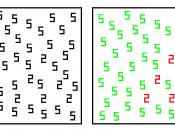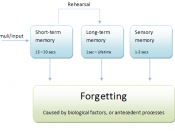"Seeing is believing," or so we have always been told. We live our lives and go about our daily routines with the notion that what we see and sense is a completely accurate perception of our world. We like to believe that those decades-old memories from our childhoods are still as fresh and undamaged by time as they were when first created. But what if our perception of the world isn't that simple? After all, memories can be altered, and at times, completely falsified through the power of suggestion, in turn giving us false recollections of events. How inaccurate do our memories become when we begin to imagine events that never actually happened? What's more, the human brain, in all its complexity, takes shortcuts when viewing the world by "filling in" the remainder of the visual field. But even this process is not infallible, for the brain can only fill in simple objects, textures and patterns.
Lastly, our visual perceptions can be changed through hallucinations. Memory alteration, hallucinations, and filling in all serve to show us that the world and our perceptions of it aren't always entirely accurate.
Memories aren't as intransient as you may think, no matter how old those memories are. They can be evoked by all five senses - a smell can elicit memories of a favorite childhood food, and certain sounds can remind us of memories we didn't even know were there. However, memories are subject to alteration, even if they are deeply engrained in the brain. In fact, every time a long-term memory is recalled, it becomes malleable in the same way that brand new memories are just as changeable (Medina, 2008). When you retrieve a long-term memory, the brain inserts new bits and pieces of information into that memory in an attempt to relate...


